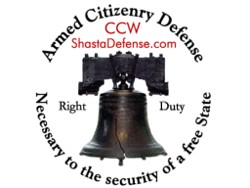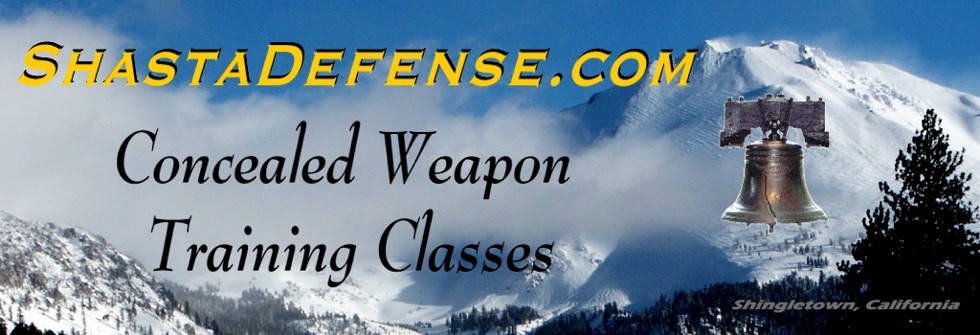|
CCW Firearms Training
Classes

Source of Following article: Gun Owners of America
For education and historical reference and research.
Sunday, 28 September 2008 19:00
Deacons For
Defense
by Larry Pratt
A little-known episode in American
history has been snatched from oblivion by Tulane University
Professor Lance Hill. He has documented the pivotal events
of the civil rights movement in his book, The Deacons for
Defense: Armed Resistance and the Civil Rights Movement
published by the University of North Carolina Press.
Hill makes it clear that the civil rights
movement would have been wiped out in the south by the Ku
Klux Klan if it had not been for the Deacons. Before the
rise of the Deacons for Defense and Justice (their full
name), the prevailing ideology of the movement was a product
of the white liberals in the north who had no concept of the
terrorism the Klan could unleash.
The Congress of Racial Equality (CORE),
the Student Non-Violent Coordinating Committee (SNCC) and
the Southern Christian Leadership Campaign (SCLC -- Martin
Luther King's organization) were all proponents of meeting
violence with pacifism. Jesse Jackson, then an aide to King,
drank so deeply from this pacifistic well, that he is still
(along with most of the black leadership in the US) anti
self-defense and a supporter of gun control.
Some argued that if Ghandi could throw
off British colonialism in India with a pacifistic strategy,
it should work in the U.S. Hill points out that the British
were ruling from afar and the English working class had no
direct investment in maintenance of the empire. But in the
south, everything was up close and personal. The Klan was
part of a community, many of whom felt directly threatened
by the elimination of segregation's two sets of laws -- one
for blacks, the other for whites.
By the way, although Hill does not deal
with the biblical aspect of segregation, it was very clearly
a set of laws in conflict with Scripture. Exodus 12:49
requires that the same law apply to everybody alike. And in
spite of the name, Deacons, the black self-defense group did
not engage in any theological debates over whether the use
of lethal force in self defense is biblical. (It is
biblical: see my What Does the Bible Say About Gun Control?
found at http://www.gunowners.org/fs9902.htm.)
The Deacons first emerged as a visible
self-defense force in Jonesboro, LA. From the very beginning
the Deacons represented a new force in the civil rights
movement -- leadership had passed from white northern
liberals (and blacks who bought into that liberalism) to
southern working class blacks who lived in the very
communities where the Deacons were active.
The spring and summer of 1964 was a time
of growing anti-segregation demonstrations in Jonesboro. The
Klan responded at one point with a menacing parade through
the black section of town – led by the chief of police.
The Deacons informed the chief that if that happened again,
"there would be some killing going on." The Klan
never did that again.
Cross burning ended suddenly the night
that a cross was set on fire in front of a clergyman's
house. Shots rang out aimed at the Klan as the torch touched
the cross. The Klan departed and never repeated that trick.
Hill found that the Deacons did not take
just anybody into their ranks for this rather "high
octane" volunteer work. They screened the applicants to
make sure they were getting men who could handle the
pressure and not go off half cocked.
During a desegregation effort at the
Jonesboro High School, the authorities brought up fire
trucks and prepared to hose the black students attempting to
enter the school. The Deacons pulled up and four men
publicly loaded shotguns and then made it plain that the
lead was for the firemen if they turned the hoses on. The
firemen wisely beat a retreat.
This was a very significant event. This
was a self-defense effort in the spirit of the American War
for Independence. The government was attempting to exercise
illegitimate power (enforcing an unbiblical law which by
this time also violated federal law) and it was repulsed by
the use of community force -- by the militia, if you will.
The Deacons were in the great tradition
of American freedom -- liberty is not given by tyrants and
thugs, it is wrested from their hands by force.
Jonesboro saw one more exercise of
defensive force before the Klan was finally convinced that
they could not intimidate the black community. When Deacon
Elmo Jacobs was driving a carload of white civil rights
workers, they were fired upon and took a load of buckshot in
the door of Jacobs' car. Jacobs returned fire and the Klan
attack ended immediately -- and for good.
In Bogalusa, LA, Hill found that the
police made no attempt to stop the attacks and in fact took
pains to arrest blacks who had armed themselves in self
defense. In other words, gun control was simply a tool of
people control and had nothing to do with fighting crime.
Had crime control been the concern, plenty of opportunities
had come and gone to arrest the Klan.
FBI agent Frank Hicks warned Bogalusa
blacks that any self-defense shooting by a black -- of a
white -- would result in an arrest for murder. He did not
explain where the FBI had any legal or constitutional
authority for such a move, but the Deacons were not
interested in a scholarly debate. They simply told Hicks
that self defense is a constitutional right. Hicks got the
message.
A lethal moment in Bogalusa shocked the
Klan into the realization that blacks were no longer chattel
punching bags. During a 1965 summer desegregation
demonstration, white hecklers turned violent and threw a
brick which struck Hattie Mae Hill. The white mob surrounded
the car the Deacons were using to attempt an evacuation of
the terrified girl.
As the mob threatened to break into the
car, Deacon Henry Austin shouted that he had a gun. Then he
fired a warning shot from his .38 into the air. The mob kept
closing in. Austin then fired almost point blank into the
chest of Alton Crowe who was in the front of the mob. While
Crowe survived, the fun of beating up on blacks died that
afternoon in Bogalusa.
All the white liberals in the north and
their black allies, with all their clucking that defensive
violence would only provoke more violence, had failed to get
the feds to enforce their civil rights laws. Henry Austin
and the Deacons succeeded. After all, if the police and the
National Guard had not been mobilized, there might have been
harm to Klansmen.
The battle raged for another year or so,
but the Jonesboro and Bogalusa resistance efforts proved to
be the turning point. Klan meetings became more likely to
involve admiration of a colleague's tooth than to plot a
terrorist act that might get Klansmen killed.
Addendum:
Second Amendment attorney Don Kates
showed this column to a friend of his who is a Yale law
professor in 2005. In the 1960's, he was an eye witness to
the effectiveness of the Deacons for Defense, as this note
to Don Kates states.
Don:
I was in New Orleans in August 1965, working as a
just-graduated law student with the black law firm
(Collins, Douglas, & Elie) who represented CORE. When
I and a few other whites went to Bogalusa to help the
bogalusa Voters League stage a protest march there, we
were met outside of town by the Deacons and escorted to
the BVL staging area by a black man in a pickup truck
equipped with a shotgun prominently displayed, and
although we were followed by whites who knew what we were
there for, they did not stop our truck, presumably because
they knew we were armed. We proceeded with the march amid
much heckling, threats, and verbal abuse by the crowds of
whites lining the route but the Deacons maintained order
while the local police stood by brandishing weapons that
could have been used against us rather than against the
mob. I shall never forget the pride, courage, and
hospitality displayed by the black community there,
threatened by their townsmen but protected by their own
Deacons. I have no doubt that their weapons had something
to do with it
End
Copy at: www.ShastaDefense.com
|

